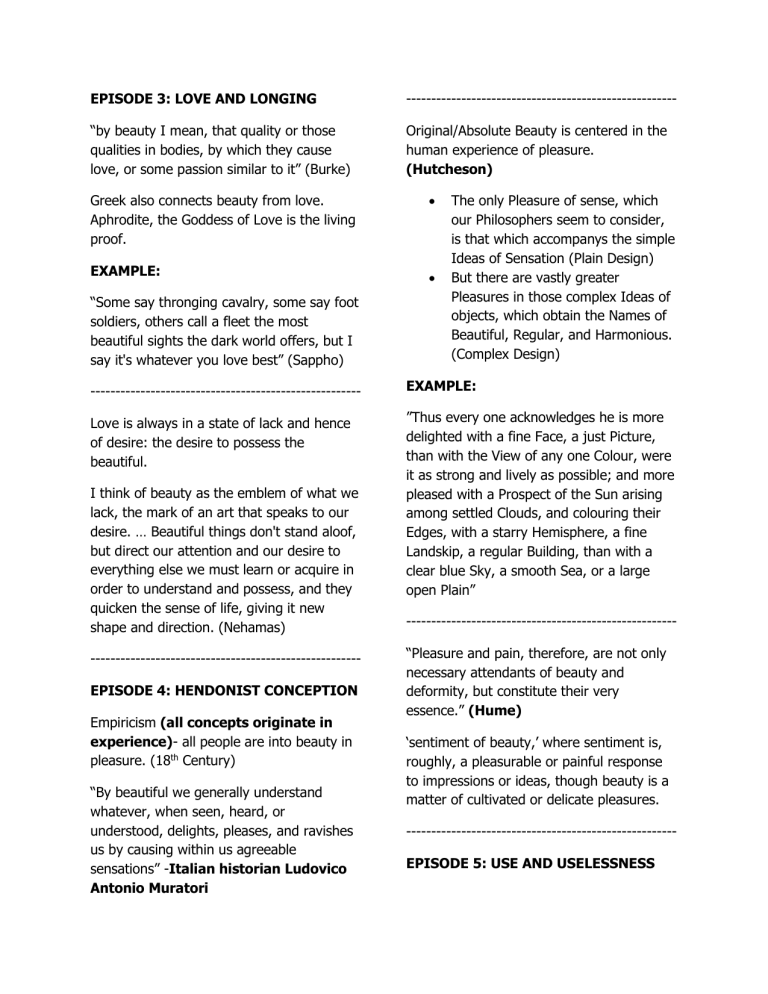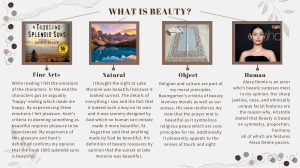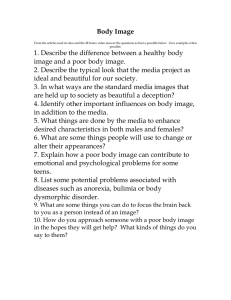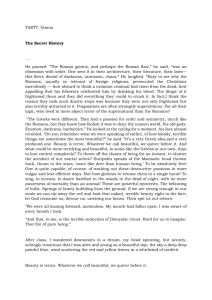
EPISODE 3: LOVE AND LONGING ------------------------------------------------------ “by beauty I mean, that quality or those qualities in bodies, by which they cause love, or some passion similar to it” (Burke) Original/Absolute Beauty is centered in the human experience of pleasure. (Hutcheson) Greek also connects beauty from love. Aphrodite, the Goddess of Love is the living proof. EXAMPLE: “Some say thronging cavalry, some say foot soldiers, others call a fleet the most beautiful sights the dark world offers, but I say it's whatever you love best” (Sappho) The only Pleasure of sense, which our Philosophers seem to consider, is that which accompanys the simple Ideas of Sensation (Plain Design) But there are vastly greater Pleasures in those complex Ideas of objects, which obtain the Names of Beautiful, Regular, and Harmonious. (Complex Design) ------------------------------------------------------ EXAMPLE: Love is always in a state of lack and hence of desire: the desire to possess the beautiful. ”Thus every one acknowledges he is more delighted with a fine Face, a just Picture, than with the View of any one Colour, were it as strong and lively as possible; and more pleased with a Prospect of the Sun arising among settled Clouds, and colouring their Edges, with a starry Hemisphere, a fine Landskip, a regular Building, than with a clear blue Sky, a smooth Sea, or a large open Plain” I think of beauty as the emblem of what we lack, the mark of an art that speaks to our desire. … Beautiful things don't stand aloof, but direct our attention and our desire to everything else we must learn or acquire in order to understand and possess, and they quicken the sense of life, giving it new shape and direction. (Nehamas) -----------------------------------------------------EPISODE 4: HENDONIST CONCEPTION Empiricism (all concepts originate in experience)- all people are into beauty in pleasure. (18th Century) “By beautiful we generally understand whatever, when seen, heard, or understood, delights, pleases, and ravishes us by causing within us agreeable sensations” -Italian historian Ludovico Antonio Muratori -----------------------------------------------------“Pleasure and pain, therefore, are not only necessary attendants of beauty and deformity, but constitute their very essence.” (Hume) ‘sentiment of beauty,’ where sentiment is, roughly, a pleasurable or painful response to impressions or ideas, though beauty is a matter of cultivated or delicate pleasures. -----------------------------------------------------EPISODE 5: USE AND USELESSNESS “Taste is the faculty of judging an object or mode of representing it by an entirely disinterested satisfaction or dissatisfaction. The object of such satisfaction is called beautiful” (Kant) “Distance is produced in the first instance by putting the phenomenon, so to speak, out of gear with our practical, actual self; by allowing it to stand outside the context of our personal needs and ends.“ (Bullough) --------------------------------------------EXAMPLE: Socrates: In short everything which we use is considered both good and beautiful from the same point of view, namely its use. Aristippus: Why then, is a dung-basket a beautiful thing? Socrates: Of course it is, and a golden shield is ugly, if the one be beautifully fitted to its purpose and the other ill. -----------------------------------------------------Things are beautiful only in relation to the uses for which they are intended or to which they are properly applied. (Xenophon) Fine Arts VS Craft Performing a practical task (Crafts), beautiful work of art and has purpose (Fine Arts) A cathedral is not as such more beautiful than an airplane, … a hymn than a mathematical equation. … A well-made sword is not more beautiful than a wellmade scalpel, though one is used to slay, the other to heal. Works of art are only good or bad, beautiful or ugly in themselves, to the extent that they are or are not well and truly made, that is, do or do not express, or do or do not serve their purpose. (Coomaraswamy)



